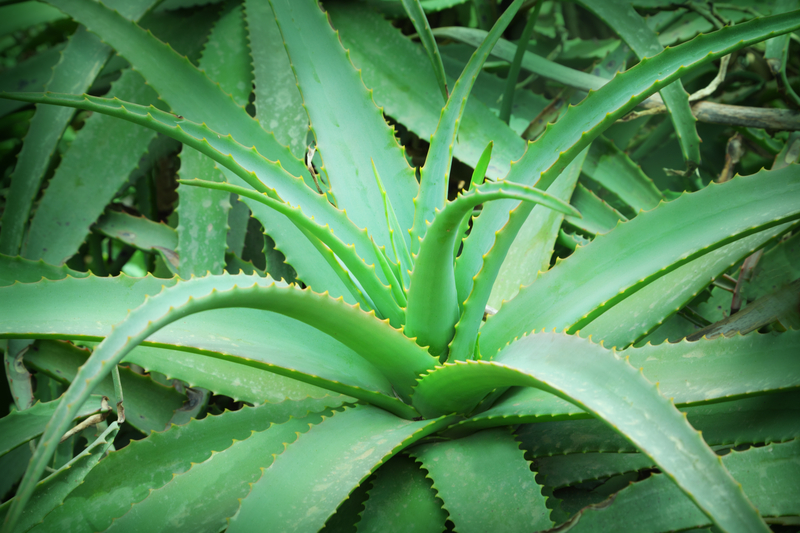Growing up in Canada, even in the coldest of winter months, I always knew of someone who had an Aloe plant growing in their house. It’s one of those age-old traditions that has been passed down for centuries. As common as mint is for digestion or honey is for colds, Aloe has always been known for it’s healing properties.
Aloe, which can also be known as Aloe vera, is a member of the succulent family grown in the warmer areas of the earth. Generally known as a topical treatment for skin wounds, scars, insect bites, burns or irritations, Aloe leaves contain 200 biologically-active elements and compounds. Amongst these are polysaccharides, enzymes, 18 types of amino acids, 12 vitamins including the antioxidants A, C and E and 20 minerals such as zinc, calcium, iron and potassium.
So we know that Aloe applied topically can help to heal the skin, but did you know that it can also have the same effect when taken internally? There are many causes for intestinal distress. Research has shown that Aloe can help to reduce inflammation in the digestive tract caused by inflammatory gut disorders such as Irritable Bowel Syndrome and Colitis.
Aloe contains anti-inflammatory compounds, such as salicylic acid which can be used to treat conditions like ulcers and inflammatory bowel disease. Proven to be quite healing to mucous membranes of the digestive tract, Aloe has also been shown to reduce pain. Research has recently revealed the effects of Aloe on lowering glucose levels in Type 2 Diabetes.
Aloe can help to increase the amount of healthy bacteria within the intestines, which can significantly aid the overall digestive process. As a Nutritionist, I was taught to heal the gut before replenishing it or restoring it back to optimal health. If the integrity of the digestive system isn’t intact, the body won’t properly absorb the nutrients required to address specific conditions.
As it contains anti-bacterial, anti-microbial and anti-viral properties, Aloe can balance the immune system by helping to rid the body of unwanted pathogens. It can also be used in liquid form as a natural mouthwash as a result of these beneficial properties.
Containing no sugar or glycerol, Land Art’s Aloe Vera gel provides a superior intake of polysaccharides and active ingredients full of antioxidant and revitalizing power. Each portion of 60 ml contains 99% pure Aloe Vera, using only the inner fillet. Their product is also gluten-free, wheat-free, yeast-free and corn-free, which is integral to ensure proper healing of the gut.
“Land Art’s Aloe Vera is a superior quality product that is 99% pure. The Aloe used in our formula is cultivated in America and is cold-stabilized to prevent oxidation and keep its properties intact. Certified organic, this product does not contain sugar or glycerin and has a delicate, pleasant taste of cranberries. It is a product with many virtues that everyone should have at home.”
Here’s a quick tip (so be careful):
Whole leaf = laxative effect
Inner fillet = soothing effect
NOTE: Pay attention when buying aloe…
Always consume Aloe that has been labeled that it can be taken internally. It should be avoided during pregnancy as it can help to stimulate uterine contractions. It should also be avoided during breastfeeding as it’s excreted through the mother’s milk and can be harmful to the infant.
Land Art is a Canadian company with over 20 years of experience within the natural health field. Their products are all formulated by a multidisciplinary team of biochemists, naturopathic doctors, microbiologists and food science specialists.
Make sure to follow along with the #CatherinesCabinet Instagram account! For more information and helpful tips, make sure to stay up to date with all things Health & Nutrition on my website, Catherine’s Cabinet.
In health,
Catherine Sugrue, CNP
Holistic Nutritionist
Photos: Land Art Canada
Source reference: Lipiski, PhD, CCN, CHN, Elizabeth; Digestive Wellness 4th Edition; McGraw-Hill 2012



